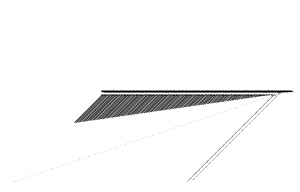Mosquito 1
Mosquito 1 is a 103-cell quadratic growth pattern that was found by Nick Gotts on September 29, 1998. At the time of its discovery, it was the smallest known pattern exhibiting superlinear growth (passing the former record holder jaws), but it was surpassed one week later by a 97-cell pattern found by Stephen Silver, and then almost immediately by the 85-cell mosquito 2.
| Mosquito 1 | |||
| |||
| View static image | |||
| Pattern type | Miscellaneous | ||
|---|---|---|---|
| Number of cells | 103 | ||
| Bounding box | 1794×412 | ||
| Discovered by | Nick Gotts | ||
| Year of discovery | 1998 | ||
| |||
It consists of the classic puffer 2 plus four lightweight spaceships and four middleweight spaceships. Once it gets going it produces a new block-laying switch engine (plus a lot of junk) every 280 generations. It is therefore an MMS breeder, albeit a messy one.
Image gallery
 |
 Generation 35000 of mosquito 1 |
gollark: [several hours of mocking by hydraz because "no higher-kinded-types" or something]
gollark: It probably indicates a logic error, so probably you should complain at the programmer.
gollark: 3.
gollark: Praise F#!
gollark: Foolish languages like that probably don't do currying.
See also
This article is issued from Conwaylife. The text is licensed under Creative Commons - Attribution - Sharealike. Additional terms may apply for the media files.
